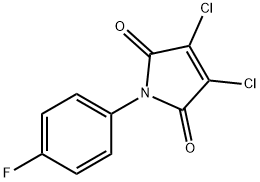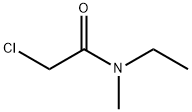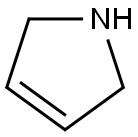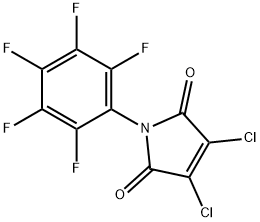FLUOROIMIDE
- CAS NO.:41205-21-4
- Empirical Formula: C10H4Cl2FNO2
- Molecular Weight: 260.05
- MDL number: MFCD00053087
- SAFETY DATA SHEET (SDS)
- Update Date: 2023-05-15 10:43:58

What is FLUOROIMIDE?
Chemical properties
yellow crystalline powder
The Uses of FLUOROIMIDE
Fluoroimide is used to control Monilinia mali and Mycosphaerella pomi in apples, Diaporthe citri and Elsinoe fawcetti in citrus, Corticium spp. in rubber trees, Botryfis cinerea and Peronospora destructor in onions, Colletotrichum theae-sinensis and Exobasidium vexans in tea, Phytophthora infestans in potatoes at 2-5 kg a.i. ha-1 and Cercospora kaki and Mycosphaerella mwae in persimmons at 0.5-2 kg ha-1.
Definition
ChEBI: A maleimide that is substituted at positions 3 and 4 by chlorines and on the nitrogen by a p-fluorophenyl group. Previously used as a fungicide (now obsolete).
Metabolic pathway
Fluoroimide is a relatively volatile solid with a high melting point. It degrades to a range of products in soils and plants. The main pathways are hydrolysis of the amide bond causing scission of the maleimide ring and stepwise reduction involving dechlorination of the maleimide ring. Little transformation of the parent fungicide occurred on plants.
Degradation
Hydrolysis of fluoroimide is base catalysed. The DT50 values for the hydrolysis are 52.9,7.5 and 1.4 minutes at pH 3,7 and 8, respectively. The fungicide is stable to sunlight (PM).
Properties of FLUOROIMIDE
| Melting point: | 238~242℃ |
| Boiling point: | 324.7±42.0 °C(Predicted) |
| Density | 1.63±0.1 g/cm3(Predicted) |
| vapor pressure | 3.4 x 10-3 Pa (25 °C) |
| storage temp. | Inert atmosphere,Room Temperature |
| solubility | DMSO (Sparingly), Methanol (Slightly) |
| Water Solubility | 5.9 mg l-1 (20 °C) |
| pka | -4.79±0.60(Predicted) |
| form | Solid |
| color | Off-White to Light Yellow |
Safety information for FLUOROIMIDE
| Signal word | Danger |
| Pictogram(s) |
 Corrosion Corrosives GHS05  Skull and Crossbones Acute Toxicity GHS06  Environment GHS09 |
| GHS Hazard Statements |
H318:Serious eye damage/eye irritation H331:Acute toxicity,inhalation H411:Hazardous to the aquatic environment, long-term hazard |
| Precautionary Statement Codes |
P261:Avoid breathing dust/fume/gas/mist/vapours/spray. P273:Avoid release to the environment. P280:Wear protective gloves/protective clothing/eye protection/face protection. P311:Call a POISON CENTER or doctor/physician. P305+P351+P338:IF IN EYES: Rinse cautiously with water for several minutes. Remove contact lenses, if present and easy to do. Continuerinsing. |
Computed Descriptors for FLUOROIMIDE
New Products
(S)-3-Aminobutanenitrile hydrochloride 4-Methylphenylacetic acid N-Boc-D-alaninol N-BOC-D/L-ALANINOL Tert-butyl bis(2-chloroethyl)carbamate 3-Morpholino-1-(4-nitrophenyl)-5,6-dihydropyridin- 2(1H)-one Furan-2,5-Dicarboxylic Acid Tropic acid 1-Bromo-3,5-Di-Tert-Butylbenzene S-2-CHLORO PROPIONIC ACID ETHYL ISOCYANOACETATE 2-Bromo-1,3-Bis(Dimethylamino)Trimethinium Hexafluorophosphate 4-IODO BENZOIC ACID 3-NITRO-2-METHYL ANILINE 1-(2,4-DICHLOROPHENYL) ETHANAMINE (2-Hydroxyphenyl)acetonitrile 4-Bromopyrazole 2-(Cyanocyclohexyl)acetic acid 4-methoxy-3,5-dinitropyridine 1-(4-(aminomethyl)benzyl)urea hydrochloride 2-aminopropyl benzoate hydrochloride diethyl 2-(2-((tertbutoxycarbonyl)amino) ethyl)malonate tert-butyl 4- (ureidomethyl)benzylcarbamate Ethyl-2-chloro((4-methoxyphenyl)hydrazono)acetateRelated products of tetrahydrofuran








You may like
-
 Fluoroimide 95% CAS 41205-21-4View Details
Fluoroimide 95% CAS 41205-21-4View Details
41205-21-4 -
 2033-24-1 98%View Details
2033-24-1 98%View Details
2033-24-1 -
 1975-50-4 98%View Details
1975-50-4 98%View Details
1975-50-4 -
 2-HYDROXY BENZYL ALCOHOL 98%View Details
2-HYDROXY BENZYL ALCOHOL 98%View Details
90-01-7 -
 2-Chloro-1,3-Bis(Dimethylamino)Trimethinium Hexafluorophosphate 221615-75-4 98%View Details
2-Chloro-1,3-Bis(Dimethylamino)Trimethinium Hexafluorophosphate 221615-75-4 98%View Details
221615-75-4 -
 61397-56-6 CIS BROMO BENZOATE 98%View Details
61397-56-6 CIS BROMO BENZOATE 98%View Details
61397-56-6 -
 14714-50-2 (2-Hydroxyphenyl)acetonitrile 98+View Details
14714-50-2 (2-Hydroxyphenyl)acetonitrile 98+View Details
14714-50-2 -
 118753-70-1 98+View Details
118753-70-1 98+View Details
118753-70-1